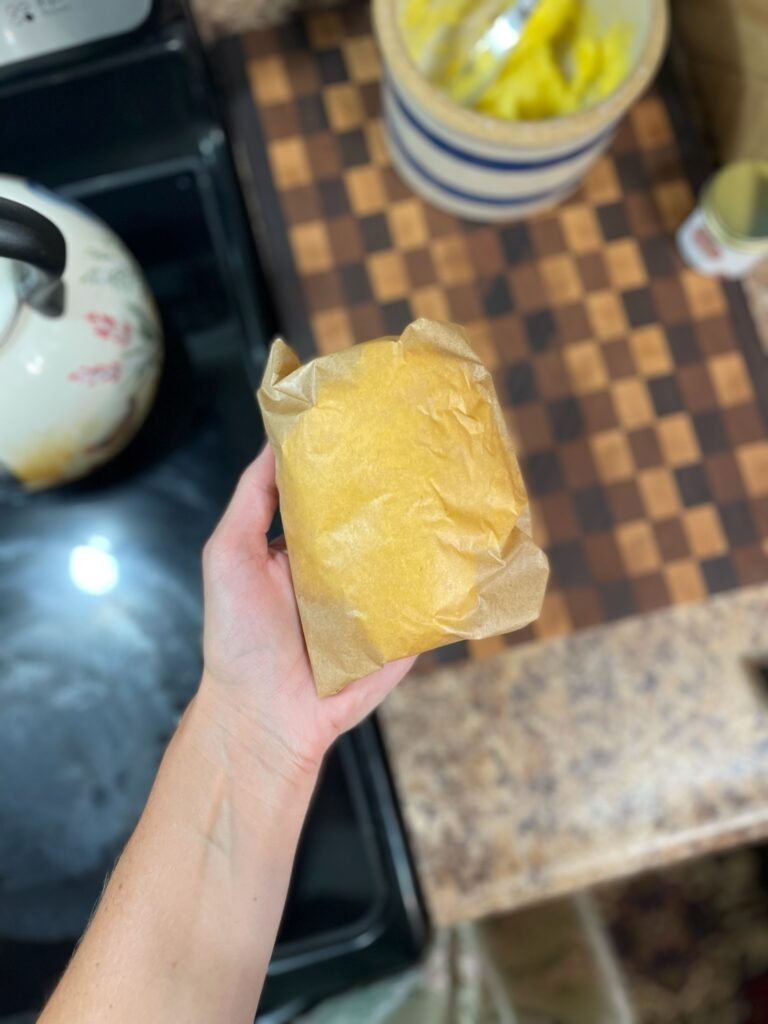Butter has been a staple in traditional diets for thousands of years. Long before modern food processing and margarine alternatives, communities around the world relied on butter made directly from raw milk for both its nutrition and flavor. In recent years, there has been a growing movement to return to this wholesome practice, as more people become interested in natural foods and homemade ingredients. If you’ve ever wondered how to make butter from raw milk or searched for where to buy raw butter, this article will guide you through everything you need to know—along with a complete step-by-step method to make your own creamy, nutrient-rich butter from scratch.
Why Make Butter from Raw Milk?
Raw milk butter is unique because it retains all the living enzymes, beneficial bacteria, and natural nutrients present in unprocessed milk. Unlike pasteurized cream, raw cream has a richer flavor and provides fat-soluble vitamins like A, D, E, and K, which are easier for your body to absorb when consumed with natural fats.
Some key benefits of raw milk butter include:
-
Better digestion: Naturally occurring enzymes can help improve digestion.
-
More nutrients: Raw butter is rich in short- and medium-chain fatty acids, CLA (conjugated linoleic acid), and vitamins.
-
Superior taste: A creamy, complex flavor that industrially produced butters simply can’t match.
-
Connection to tradition: Making your own butter connects you to ancestral food ways and simple living.
If you are passionate about real food, knowing how to make raw milk butter at home is not only rewarding but also healthier.
What You’ll Need
Before diving into the process, let’s quickly review the equipment and ingredients you’ll need to start.
-
Raw milk (fresh, preferably from grass-fed cows or goats)
-
Glass jars or containers to store cream
-
A mixer, blender, or hand churner
-
Cheesecloth or fine strainer
-
A wooden spoon or spatula
-
Filtered cold water
Using the freshest raw milk is crucial. Raw milk separates naturally when stored in the fridge: cream rises to the top, making it possible to skim off and use for butter-making.
Step-by-Step: How to Make Butter from Raw Milk
This is the section most readers are waiting for. You might be asking yourself, how do you make butter from raw milk? The process is simple, and once you’ve done it a few times, it feels natural.
Step 1: Skim the Cream
Pour your raw milk into a clean glass jar or wide container. Leave it undisturbed in the fridge for 12–24 hours. During this time, the cream will float to the top. Using a ladle or spoon, carefully skim the cream layer and place it into another jar. This is the base for making butter.
Step 2: Culture the Cream (Optional but Recommended)
To enhance both flavor and nutrition, you can culture the cream. Place your skimmed cream in a jar, loosely cover it, and leave it at room temperature for 12–24 hours. This allows natural bacteria to ferment the cream slightly, giving your butter a tangy, rich flavor.
Step 3: Churn the Butter
Now the cream is ready for churning. You can use a blender, stand mixer, food processor, or even a traditional butter churn. Begin whipping the cream at medium speed. First, it will turn into whipped cream. Continue mixing, and soon the fat will separate from the liquid, forming clumps of yellow butter.
Step 4: Drain the Buttermilk
Once the butter has formed, pour off the liquid. This liquid is buttermilk and can be saved for baking, pancakes, or even drinking if you enjoy its tangy taste.
Step 5: Wash the Butter
Place the butter into a bowl and wash it with very cold filtered water. Knead the butter with a wooden spoon, pouring off the cloudy water and replacing it with fresh water as needed. Continue until the water runs clear. This step is critical for extending shelf life and preventing sourness.
Step 6: Salt and Store
Once your butter is clean, knead in a pinch of mineral-rich sea salt (optional) for both flavor and preservation. Pack the butter into a glass jar or butter mold, then store it in the fridge. It should last one to two weeks—or you can freeze it for longer storage.
Frequently Asked Questions
How long does homemade raw butter last?
In the refrigerator, salted raw butter typically lasts up to two weeks. Freezing can extend its shelf life up to six months.
Can I use raw goat milk instead of cow milk?
Yes! Goat cream produces delicious butter as well, though the flavor may be slightly different and sometimes tangier.
What happens to the leftover buttermilk?
Traditional buttermilk is rich in probiotics. You can drink it as is, ferment it further, or use it in baking recipes.
Health Benefits of Raw Butter
Making butter with raw milk is not only about flavor—it’s also about health. Here’s what makes it stand out:
-
Full of healthy fats that support hormone balance and cognitive function.
-
Rich in vitamins A and D, which help strengthen vision, immunity, and bone health.
-
Contains CLA, shown in studies to reduce inflammation and support heart health.
-
Supports gut health if made with cultured cream.
Compared to processed butter, raw butter offers a much more complete nutritional package.
Where to Buy Raw Butter
Not everyone has the time or access to fresh raw milk for butter-making. If you’re wondering where to buy raw butter, the good news is that many local farms, farmers’ markets, and specialty health food stores now offer raw or minimally processed butter. Always source from trusted and reputable farmers who use hygienic practices. One reliable way to find suppliers in your area is through trusted farming networks such as Real Milk Finder that help you locate authentic raw milk products near you.
Tips for Making the Best Raw Milk Butter
-
Use milk from grass-fed animals for the highest nutrient content.
-
Always keep utensils and containers very clean during the process.
-
Try culturing the cream for better taste and probiotic benefits.
-
Experiment with add-ins like garlic, fresh herbs, or honey for flavored butters.
-
If your first batch feels overwhelming, start small with just a quart of raw milk.
Read More: How Do You Make Butter from Raw Milk by Hand Churning?
Why Homemade Raw Butter Is Worth It
Learning how to make butter with raw milk at home is more than just a kitchen skill—it’s a lifestyle choice. It allows you to control the quality of your food, enjoy superior taste, and provide your body with wholesome nutrition. Unlike store-bought alternatives, raw butter carries the essence of traditional nourishment, connecting us to a simpler, more sustainable way of eating.
If you’ve been on the fence about trying, this is your sign. Making butter is easy, fun, and incredibly rewarding. Whether you consume it daily on freshly baked bread or use it for sautéing vegetables, your homemade raw butter will always taste better, feel healthier, and give you satisfaction that no packaged product can match.









